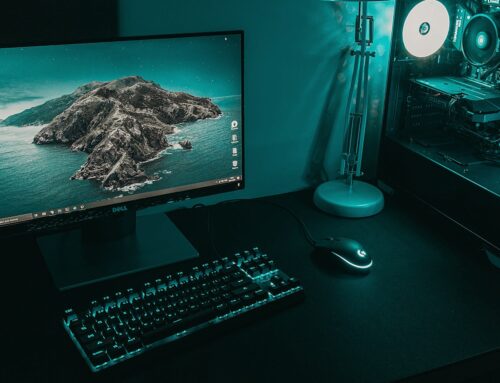It can be really annoying when your desktop keeps restarting out of the blue. This problem interrupts your work, makes it hard to enjoy your favourite games, and can even lead to data loss. Knowing why your desktop is doing this is the first step to fixing it and putting an end to your frustration.
Several issues can lead to a desktop restarting repeatedly. It could be something simple like an overheating problem or a faulty power supply. Sometimes, software issues like corrupted system files or a virus can also cause your computer to restart unexpectedly. While this might sound overwhelming, don’t worry; there are straightforward fixes that you can try yourself.
Before you panic and think about getting a new computer, try some basic checks and fixes. Often, these simple steps can identify and solve the problem, saving you time and money. If the issue persists after trying these solutions, you might need to look into more advanced troubleshooting steps or seek professional assistance.
In this guide, we’ll talk about common causes of desktop restarting issues and cover both simple and advanced steps you can take to fix them. Understanding these solutions will help you get your desktop back to normal.
Common Causes of Desktop Restarting Issues
When your desktop keeps restarting, it can be caused by various factors. Identifying the root cause can help you fix the problem more effectively. One common reason is overheating. If your desktop’s internal components get too hot, the system will restart to prevent damage. Make sure your computer is in a well-ventilated area and that the fans are working properly.
Another possible cause is a faulty power supply unit (PSU). If the power supply cannot provide a stable stream of electricity, your computer might restart unexpectedly. You might notice this issue if your desktop restarts more often when performing tasks that require more power, like gaming or video editing.
Software issues can also be to blame. Corrupted system files, outdated drivers, or a malware infection can make your computer unstable and lead to random restarts. Make sure your system and software are up to date and run regular virus scans to keep your computer healthy.
Memory problems can also cause restarts. Faulty RAM sticks or not enough memory can make your system restart during heavy use. Finally, hardware failures, like a failing hard drive, can also trigger unexpected restarts. If you hear unusual noises from your computer, it could be a sign of hardware trouble.
Simple Checks and Basic Fixes
Before diving into complicated fixes, start with some simple checks. Here are easy steps to solve the restarting issue:
1. Check for Overheating: Make sure your desktop has adequate ventilation. Clean any dust out of fans and vents with compressed air. Ensure that your desktop is not placed near a heat source. You can also use monitoring software to check the temperatures of your CPU and GPU.
2. Update Software and Drivers: Go to your computer settings and make sure the operating system is up to date. Check for updates for all drivers, especially for the graphics card and motherboard. Updated software can resolve bugs that cause restarting.
3. Run a Virus Scan: Use a reliable antivirus programme to scan your computer. Remove any detected threats. Sometimes, malware can cause instability and random restarts.
4. Check Power Connections: Make sure all power cables are properly connected. If possible, try using a different power socket or surge protector. You might even swap out your PSU if you suspect it’s faulty.
5. Test the RAM: If you suspect memory issues, try using a free tool like MemTest86 to check your RAM for errors. If errors are found, you may need to replace the faulty RAM sticks.
6. Disconnect Non-Essential Peripherals: Sometimes, a peripheral device can cause issues. Disconnect all non-essential devices and see if the restarting problem continues. Reconnect them one by one to pinpoint the problematic device.
These simple steps can often resolve the issue of your desktop restarting. If these fixes don’t work, you might need to try more advanced troubleshooting steps.
Advanced Troubleshooting Steps
If the simple fixes haven’t worked, it’s time to try more advanced troubleshooting. These steps are a bit more technical but can help solve persistent restarting problems.
1. Check Event Viewer: Windows has an Event Viewer that logs system errors. Press `Windows + X` and select “Event Viewer.” Look for errors under “System” that occurred around the time of the restarts. This can give you clues about what’s causing the issue.
2. Run a System File Check: Corrupted system files can lead to restarts. Open Command Prompt as an administrator and type `sfc /scannow` to run the System File Checker. This tool will scan and repair any corrupted files.
3. Test Hard Drive Health: A failing hard drive can cause system stability issues. Use a tool like CrystalDiskInfo to check your hard drive’s health status. If it shows bad sectors or other issues, consider replacing the hard drive.
4. Update BIOS/UEFI: Sometimes, updating your BIOS or UEFI can solve restarting problems. Check your motherboard manufacturer’s website for the latest firmware updates and follow their instructions for updating.
5. Disable Automatic Restart: This can help you catch error messages. Go to “System Properties,” click on “Advanced system settings,” then “Settings” under “Startup and Recovery.” Uncheck “Automatically restart” under “System failure.”
6. Check for Hardware Conflicts: Remove any recently installed hardware and see if the issue persists. Sometimes, new hardware can cause conflicts that lead to restarts.
These advanced steps require a bit more know-how but can often resolve more stubborn issues. Always proceed with caution and ensure you have backups of important data before making changes.
When to Seek Professional Help
Sometimes, despite your best efforts, desktop restarting problems can be too complicated to fix on your own. Knowing when to seek professional help can save you time and prevent further damage.
1. Persistent Issues: If your desktop continues to restart despite trying all the troubleshooting steps, it’s time to call in the pros. Persistent issues could indicate deeper hardware or software problems that need expert attention.
2. Hardware Failures: If you’ve identified hardware problems, like a faulty power supply, failing hard drive, or RAM issues, a professional can help you replace these components safely. Handling hardware replacements yourself can be risky if you’re not experienced.
3. Complex Software Problems: Sometimes, software issues such as deep-rooted malware or corrupted system files require advanced tools and knowledge to fix. Professionals have the expertise to handle such complex problems efficiently.
4. Data Recovery Needs: If you’re experiencing restarts due to a failing hard drive and need to recover important data, a professional repair service can help retrieve your data safely before it’s lost for good.
5. Warranty Considerations: If your desktop is still under warranty, attempting some fixes yourself might void it. Check your warranty terms, and if applicable, contact the manufacturer or a certified repair service.
Getting professional help can ensure that your desktop is fixed correctly and prevent further damage. It’s better to seek assistance than to risk making the problem worse through DIY fixes.
Conclusion
Dealing with a desktop that keeps restarting can be incredibly frustrating, but understanding the common causes and trying simple and advanced fixes can help you solve the problem. Overheating, faulty power supplies, software issues, and hardware failures are all possible reasons behind this issue. By performing basic checks like cleaning vents, updating software, and running virus scans, you might resolve the problem quickly.
If the simpler solutions aren’t effective, delve into advanced troubleshooting like checking the Event Viewer, running system file checks, and testing hard drive health. These steps can pinpoint and fix more serious issues. However, if your desktop continues to give you trouble, seeking professional help is crucial.
At Forest City Computer Repairs, we specialise in diagnosing and fixing desktop problems, including persistent restarting issues. Don’t struggle alone—contact us for expert help and get your desktop running smoothly again through our comprehensive desktop computer repair services.







